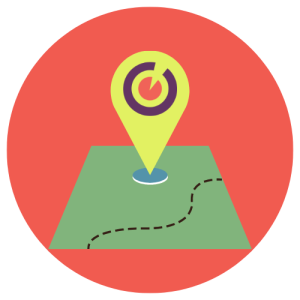Finding the Right Audience
Reach Your Best Customers
If you own or manage a niche retail or e-commerce site, what’s at the top of your wish list? The perfect customers, of course! Finding the right audience is the heartbeat of any online business, and at VIEWS Digital Marketing, we know this journey can feel like a trek through a dense digital forest—full of twists, turns, and ever-shifting trends. Business owners must stay agile and refine their audience strategy to thrive in today’s competitive market. Let’s explore how VIEWS helps you uncover, connect with, and convert your ideal buyers.
What Does Finding the Right Audience Mean?

The concept might seem like a distant dream, but what does finding the right audience really mean? It’s about pinpointing potential customers—people genuinely interested in your unique products or services—and turning them into engaged visitors you can nurture into loyal shoppers. Picture casting a strategic net through your website, social media, paid ads, or email campaigns to capture the attention that matters most.
For niche retailers like boutique apparel brands, organic skincare makers, or vintage collectible sellers, finding the right audience connects you with those who crave what you offer. For professionals and home service industries, people want to trust you so building relationships with buyers already searching for your service, guiding them toward purchases, and fostering repeat business. The more tailored your audience, the more your business can flourish!
One of our clients came to us with a website that wasn’t performing for them. They wanted brand recognition and to get their brand in front of an upscale audience who needed expert luxury architectural design services to get the unique style and functionality to meet their specific lifestyle needs. See how our strategy helped them achieve their goals.
What’s the Elephant in the Room?
Every business owner faces the big, undeniable challenge of reaching the right crowd. But more than just finding them, the challenge is understanding and engaging them effectively. That’s the “elephant in the room” many overlook. For instance, a specialty coffee roaster might attract coffee lovers but lose them without personalized follow-ups over the next few weeks. Sharing useful information like a brewing guide email or a limited-edition offer. A vintage toy seller could boost sales by sending a nostalgic video after a site visit, followed by a discount code. In competitive niches, the sales cycle demands consistent, value-packed touchpoints to move prospects from curiosity to checkout. Without this, leads fade fast, leaving your revenue potential untapped.
The secret? Thoughtful, targeted communication that speaks directly to their interests.


Plan your Journey
- Build Your Brand
- Find Your Audience
- Generate Leads
How to Identify Your Ideal Audience
We start by mapping out who your perfect customers are with precision:
-
Demographics & Interests
We dig into age, location, income, and passions—think eco-conscious parents for a sustainable baby gear store or tech enthusiasts for a gadget refurbisher. Tools like Facebook Insights and Google Trends light the way.
-
Behavioral Clues
What do they search for? What problems do they face? Analyzing keywords (e.g., “handmade leather bags”) and browsing habits reveals their intent.
-
Competitor Peek
We study who’s buying from your rivals. If a competitor’s Pinterest is full of DIY crafters, we’ll tailor your strategy to either join or redefine that space. For a client selling artisanal spices, we might identify foodie millennials in urban areas to shape a winning campaign.
Where to Reach Your Customers
Once we know who they are, VIEWS finds where they roam:
- Social Media Hotspots: Instagram shines for visual niches (e.g., jewelry), TikTok grabs younger trendsetters, and Facebook suits community-driven buyers. So matching a pet accessory brand to Instagram Reels could boost engagement.
- Search Engines: Google Ads and SEO place you in front of active searchers. For a vintage film poster and movie memorabilia dealer, we targeted “vintage posters and rare books,” to drive high-intent traffic.
- Email & Niche Groups: Personalized emails or forums (e.g., Reddit’s Sustainable Living) build trust. A client saw a 49% open rate with targeted emails addressing areas of interest for audience segments.
- AI or Generative Engines: This is a new frontier but addressing the searcher intent and answering questions posed to AI engines will position your content to be found by these tools.
We don’t waste shots. We start with strategy, test platforms, track results, and double down on what works.
Understanding Customer’s Needs
Your audience has specific desires, and VIEWS uncovers them, for example:
- Convenience: Busy professionals want fast shipping or one-click buys.
- Values: Niche buyers prioritize ethics—fair trade, local, or green.
- Knowledge: Unique products need context. Collectors of vintage memorabilia wanted to be informed by their browsing experience—we delivered a gallery that increased site visits exponentially and resulted in around 200 requests per year to buy or sell.
We use analytics and surveys to spot these needs, turning insights into action.
Answering Customer’s Questions
When your audience engages, they ask questions and VIEWS ensures you reply with impact:
- “Why Choose You?”: We spotlight your edge like unique craftsmanship, exceptional service.
- “Is It Worth It?”: Testimonials and clear pricing seal the deal
- “How Does This Fit Me?”: Blogs or emails relate content to user questions. A landscape designer’s “How To Properly Water Plants” blog consistently drives thousands of site visits per year. A Home Health Care Provider answers 5 challenges seniors face living alone for 100s of prospects every month.
Why Personas Are the Compass of Your Digital Strategy
Understanding your ideal target audience is also the process of creating detailed buyer or customer personas—semi-fictional representations of your ideal customers based on real data and audience insights. At VIEWS Digital Marketing, we treat personas as foundational tools that drive your marketing strategy with laser-focused precision.
A buyer persona captures the target demographics, behaviors, needs, and challenges of your ideal customer. Each persona guides how and where we engage your audience. These personas do more than inform—it’s about empathy and clarity. When you understand what your audience values, fears, and aspires to, VIEWS can help you:
- Craft a tailored content marketing plan that speaks directly to their interests.
- Choose the right platforms to reach them—LinkedIn for professionals, Pinterest for DIY communities, Reddit for values-driven consumers.
- Design offers and calls-to-action to create a more cohesive customer experience that converts curiosity into clicks and sales.
Your digital success does not begin with your product. It begins with understanding the person who needs it most. That is where personas become your map, compass, and playbook.
Why is VIEWS the Right Choice For Your Digital Marketing Partner?
See What Our Clients Have to Say
With real client reviews on Google or other platforms, customers have a stronger feeling of trust for your brand.
Valued Resource and Strategic Partner
“VIEWS Digital Marketing continues to be a valued resource and strategic partner to Weinstein Bath & Kitchen Showroom from the very beginning. From the design of our showroom website and SEO to Google ads and social media marketing, the VIEWS team has helped us grow our online presence from ground zero to a continuous source of leads, new customers and design consultations every month. We were totally lost & VIEWS Digital Marketing allowed us to focus on growing sales & leave the digital marketing to the experts. Cannot recommend highly enough!” – Pete K., Manager of Weinstein Bath & Kitchen Showroom
Great Plan and Clear Goals
“I cannot say enough good things about Views. They laid out a great plan with clear monthly goals and supported us with all needs along the way. We were excited to see the progress and get to understand the process as well!” – Jessica B.
Professional, Knowledgeable and Responsive
“The team at VIEWS Digital Marketing is amazing. Everyone I worked with is professional, knowledgeable and responsive. The process of creating my company’s new website has been much smoother than I thought it would be thanks to the support and expertise of VIEWS. Thank you to the entire team, it has been a pleasure working with you!” – Julie M.
5 Major Audience-Finding Concerns of Owners
All businesses, especially niche retailers face similar hurdles, whether you sell home services, professional advice, handmade soaps, rare vinyl, or bespoke furniture. These challenges range from unclear targeting to low engagement. How do you relate to the prospect? Your audience is hiding in plain sight. It’s just not east to see them in the digital jungle. VIEWS has the following solutions:
Unsure Who to Target
Vague audiences waste budgets. VIEWS examines your client base, competitors and online knowledge base to help you find your target. This cuts ad spend while increasing real leads.
Hard to Find the Right Space
Wrong platforms flop. Every business is different and needs to know where to find or reach their audience.
Misaligned Needs Causes Confusion
Ignoring desires kills conversions. Make sure you give. the audience what they are looking for.
Slow Engagement
Prospects stall without nudges. So what do you have to do to push them along?
Proving Value
Skeptics need convincing. Provide testimonials, authority connections and other social proof items.
Take the Next Step
Finding your audience can feel like a wild chase but it’s really a well-crafted journey. With VIEWS, you gain a partner who understands business needs of identifying your buyers to meeting them where they live. Ready to stop searching and start succeeding? Contact VIEWS Digital Marketing today. Let’s find your crowd and turn them into your community!

Reach Your Destination


Build your brand to get found online.

Find your audience to get results.

Get Leads and convert to customers.

Where Are Your Customers?
If your business struggles with low conversions maybe you are not finding the right audience. Take a new path and turn things around. By focusing on a “Ideal Customer” strategy that is designed for your business, your audience will respond to you and conversions will increase.
Contact us today, and let’s discuss how you can navigate these challenges and start seeing the results you deserve.
You Have Questions? We Have Answers.
Knowing your target audience can streamline efficiency. Instead of producing more assets to reach more people, focus on the quality of your assets and strive to reach a specific, smaller audience.
Knowing your target audience can:
Create custom material that meets your target audience’s needs. That way, they feel valued and inclined to make a purchase.
Source: asana.com
To reach your target audience, you must first define your target audience. And, for this, you need to understand your customers.
You can do this by building a consumer persona. A customer or buyer persona is a generalized representation of how your ideal buyers would be like.
You list their demographic and psychographic attributes and preferences to gain a better understanding of your target audience.
Then you can market your brand and products only to those who are most likely to be genuinely interested in them. This means that there will be higher chances of getting leads and conversions. This will help you increase revenue by investing less.
Source: grin.co
In marketing, customer personas are profiles of buyers that would be your ideal customers.
Personas are fictional characters with characteristics of your real customers. They’re developed based on target audience research and may help you direct your marketing actions better.
A persona is a person that may be interested in what you have to offer since they’re very connected to your brand and you must make an effort to make them a client and retain them.
A persona involves much deeper and more detailed research than your audience since it includes:
- personal characteristics
- purchasing power
- lifestyle
- interests
- engagement in social networks
- professional information
Persona example: Mariana, 22, blogger. Lives in Miami, Florida. Has a journalism degree. Has a blog and posts makeup tutorials and tips about fashion and decor. She always follows fashion events in the area and participates in meetings with other people in the fashion niche. As a digital influencer, she cares a lot about what people see on her social network profiles. Likes to practice indoor activities and go to the gym in her free time.
The main difference between persona and target audience is the target audience considers the whole audience in a more general way, while a persona is more specific.
Source: neilpatel.com
Every product or service appeals to a specific buyer type this would be their target market. For example, expecting parents and caregivers might be interested in buying infant car seats, and wealthy, fashion-focused people might be more willing and able to buy designer clothing.
A potential customer must have the following:
A need for the product or service (it must solve a problem for them, regardless of whether they’re aware of it)
A desire for the product once they’re aware of it
The financial ability to buy it
A product may have more than one target market. For example, Lego toys have two distinct target audiences: parents of elementary and middle school children, and Lego-aficionado adults who like to build things.
However, a target market and a target audience are not quite the same.
Did you know build customer personas to represent typical people in their target audiences. Marketing and advertising departments give these personas names, job titles, responsibilities and other traits to better understand their motivations, challenges and decision-making processes.
Source: business.com
As we mentioned earlier, there are several types of target audiences based on different audience characteristics. Here’s a quick rundown of some of the target audience types. Start thinking about which of these can be used to describe your target audience.
Purchase Intention: This is an audience that is on the verge of buying, actively searching for information about products like yours. If you’re launching an innovative fitness app, for example, this audience is already looking for the best fitness solutions available.
Interests: These individuals have similar hobbies and passions. Whether they’re into gourmet cooking, video gaming, or outdoor adventures, aligning your products and content with these interests can deeply engage them and fosterbrand loyalty.
Subculture: These are people who share unique experiences or preferences form subcultures. Whether it’s indie music lovers or vintage fashion enthusiasts, you can tap into these groups and foster a dedicated customer base.
Lifestyle: This audience is defined by their way of life, values, and activities. For brands offering luxury travel experiences, the target audience might be affluent individuals who prioritize unique and high-end vacations.
Behavioral: This type considers purchasing patterns, brand interactions, and product usage. Behavioral targeting allows for highly personalized marketing, such as recommending products based on past purchases.
Geographic: Sometimes, where your audience lives can define their needs and interests. Geographic targeting is crucial for local businesses or products tailored to specific climates or cultural preferences.
Demographic: This traditional method categorizes people by age, gender, income, education, etc. While broader, it’s useful for products with a wide appeal or when combined with other types for more precision.
Keep in mind that this list isn’t all-encompassing, and the magic often lies in mixing and matching these types or attributes to fine-tune your marketing strategy.
Now that we’ve examined some of the attributes that make up the types of target audiences, let’s discuss how to identify the right target audience for your product.
Source: ama.org







